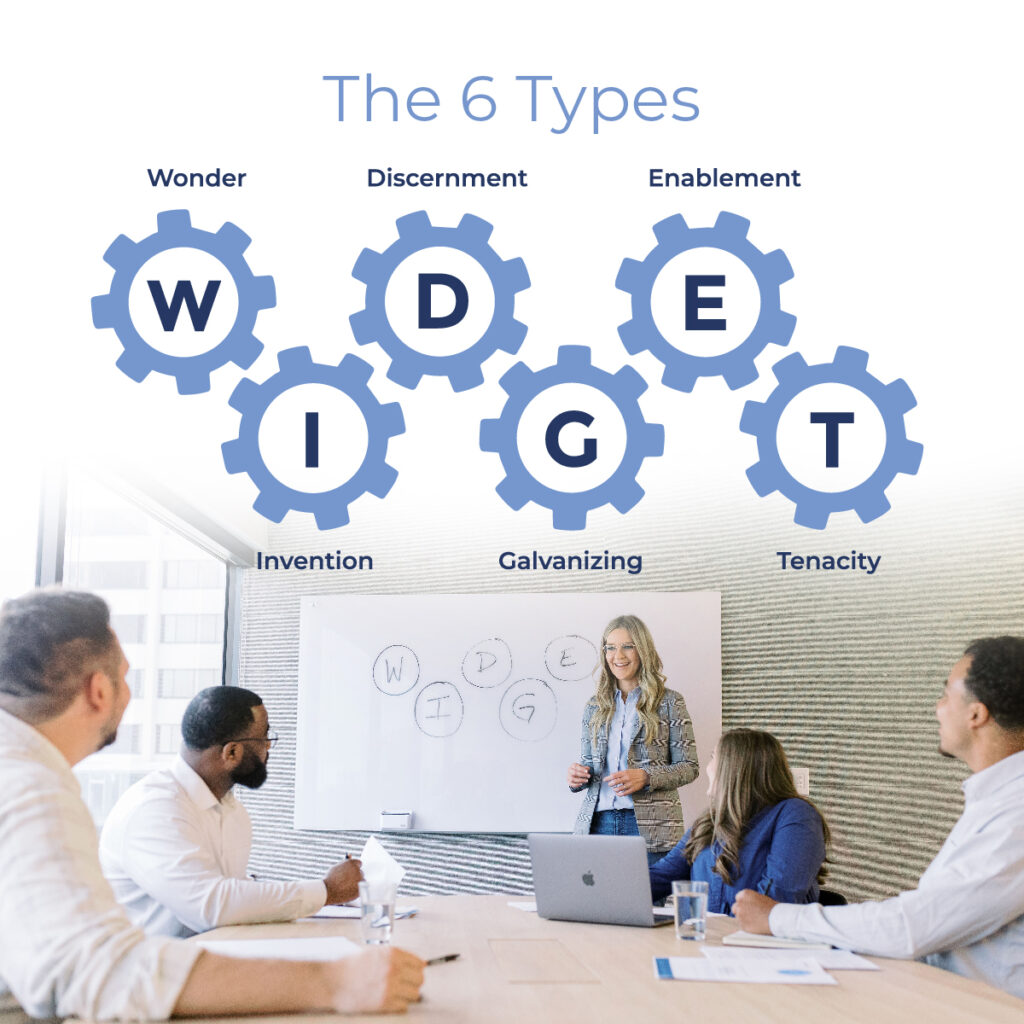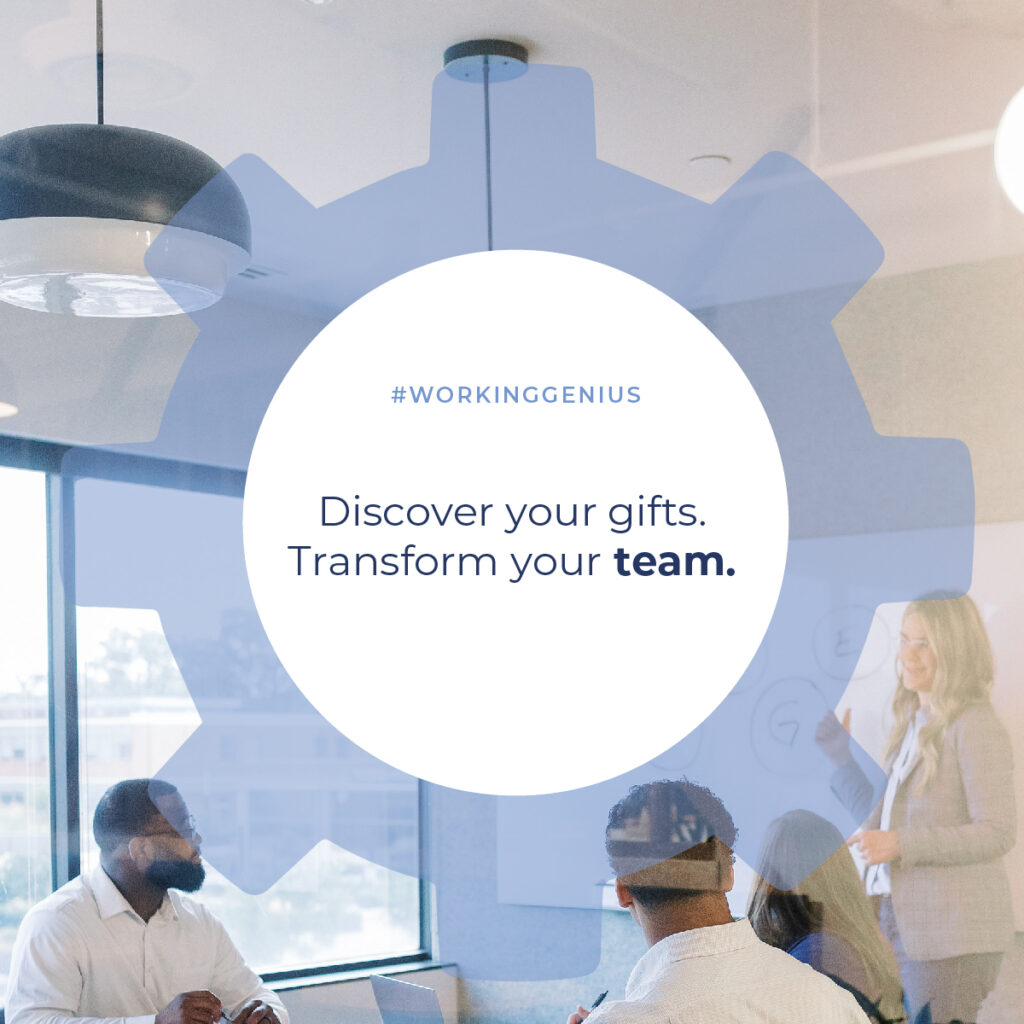Have you ever felt like you can’t do everything on your own? Or maybe you’ve wondered if your team is working as efficiently as possible. Of course, you have! Whether your team is small or large, it has the potential to accomplish much more collectively than you could alone.
If you’re leading a team, you might be familiar with various personality assessments like DISC, Kolbe, Myers-Briggs, Enneagram, and CliftonStrengths (formally known as StrengthsFinder). In my experience, these assessments don’t always provide the substantial team productivity boost you were hoping for or answer the question, “How does this help me sell more printing?”
But don’t worry; there’s a new tool that might just change the game for you: the Working Genius.
The Working Genius Model
The Working Genius model was created by Pat Lencioni. If you’re not familiar with Pat Lencioni, he’s written classic leadership books such as The Five Dysfunctions of a Team and Death by Meeting. Lencioni has an amazing way of revealing business truths in an entertaining and accessible format, and he’s done that with his latest book, The 6 Types of Working Genius.
The Working Genius model stands apart from other personality assessments and tools by helping individuals understand their strengths and aiding teams in understanding their dynamics, projects, and meetings. The model breaks down work into six fundamental activities, known as Working Geniuses. These are:
- Wonder: The natural gift of contemplating greater potential and opportunities in a given situation.
- Invention: The natural gift of creating original and innovative ideas and solutions.
- Discernment: The natural gift of intuitively evaluating ideas and situations.
- Galvanizing: The natural gift of rallying and inspiring others to take action.
- Enablement: The natural gift of providing encouragement and support for ideas or projects.
- Tenacity: The natural gift of persistently pushing projects to completion and achieving results.
According to Lencioni, each person thrives in two of these activities (their geniuses), is capable of performing two (their competencies), and has two that drain their energy (their frustrations).

This model offers a powerful framework for teams to work together effectively and improve dynamics, projects, meetings, and even hiring processes. By aligning team members with their areas of genius, you can create a more productive team, leading to better results and, in your case, selling more printing.
How the Working Genius Model Can Help You Sell More Printing
So, how are you and your team doing? Is everyone positioned to work in their areas of genius, or are they being drained of their working energy because they’re being asked to work in areas of frustration?
You may find some of your best team members are working in an area of frustration without even realizing it. You may be missing out on the greatest contribution they can offer your team!
So, break it down:
- Who are the people on your team who provide the wonder (the need for improvement and change) and invention (generating the ideas based on those improvements and changes)?
- Who provides the discernment that vets the ideas that result?
- Who galvanizes the team around those ideas?
- Who enables the team and finds the best way to get the project done?
- And who has the tenacity to do the hands-on work to get stuff done?
By understanding each team member’s strengths and aligning their roles accordingly, you can minimize friction and maximize productivity.
![]()
An Example: The Working Genius at Marketing Ideas For Printers
Let’s break this down with how Odyssey, the print MIS from Marketing Ideas For Printers, came to fruition through the Working Geniuses of the entire team.
Remember that geniuses work in sequence, and everyone has two geniuses, two competencies, and two frustrations.
Odyssey started with Wonder, the contemplation of greater potential and opportunity. It started with one team member asking, “How would it look if the information a print buyer provides on a printer’s website could be directly connected to a printer’s print MIS?” That wondering grew into the start of an idea.
From there, Invention was added, creating original and novel ideas and solutions. MIS is a crowded space, so how could we do it differently? The novel idea that resulted is adding marketing to print MIS. By having the right team member whose working genius is invention, we could challenge “legacy thinking” and show printers how marketing expands what MIS can do. In addition, other creative solutions were presented, such as providing a path to allow printers to efficiently import order history from their legacy print MIS!

Next comes Discernment: The natural gift of intuitively and instinctively evaluating ideas and situations. The team members operating out of this working genius helped us sort out which ideas to pursue and which ideas needed to be let go. For us, this phase felt like a speed bump compared to how we used to do things, but it ultimately helped us determine the best paths for Odyssey’s development and helped us go faster overall.
When it was time to get the team excited about the path of Odyssey, those on our team with the gift of Galvanizing stepped up to rally, inspire, and organize others to take action.
Then, other team members with the working genius of Enablement used their natural gifts to provide encouragement and assistance throughout the development of Odyssey. People who possess the working genius of enablement excel in empowering and equipping their teammates, helping them reach their full potential and contributing to the overall success of the team or organization. This genius is essential for fostering a collaborative and high-performing work environment.
Finally, when it’s time to push work across the finish line, you need team members with Tenacity, the natural gift of pushing projects or tasks to completion to achieve results.
Once we calibrated the work to be done for Odyssey through the lens of everyone’s strengths (geniuses), competencies, and frustrations, everything started to move with a lot less friction.
Now It’s Your Turn
You might wonder how this applies to you.
Here’s an example. Have you started wondering how to improve your sales and profitability? As you keep wondering, at some point, your conversations with yourself or others on your team will invent some ideas.
- Maybe you’ll get serious about e-commerce on your website.
- Maybe you’ll create a program to build a web portal for each of your top 50 customers.
- Maybe you’ll create a subscription service for your customers that provides benefits like preferred scheduling, free deliveries, and monthly educational lunch-and-learn seminars.
Some of these ideas will be a good fit for your company, and some will be loud flops. It’s time to discern those ideas with someone who can sort out the hits from the misses.
After the appropriate discernment, the idea to build web portals for each of the top 50 customers is deemed a hit, and it’s time to get everyone excited; it’s time to galvanize the team.
After rallying the team, it’s time to implement the idea. Who enables the required support and assistance? Who on the team has the drive and tenacity to make sure each of the top 50 customers has a fully functional web portal?
Remember that the Working Genius model acknowledges that everyone will occasionally work in their areas of competency and even frustration. But positioning your team to work primarily in their areas of genius will lead to optimal productivity and achievement of your goals with less friction.
Intrigued? Continue your exploration of The Six Types of Working Genius at www.WorkingGenius.com.
This article originally appeared in the September 2023 issue of NPSOA magazine. For more information on how you can become an NPSOA member and enjoy the many benefits offered there, contact Member Services at membership@npsoa.org or head to their website at NPSOA.org.


